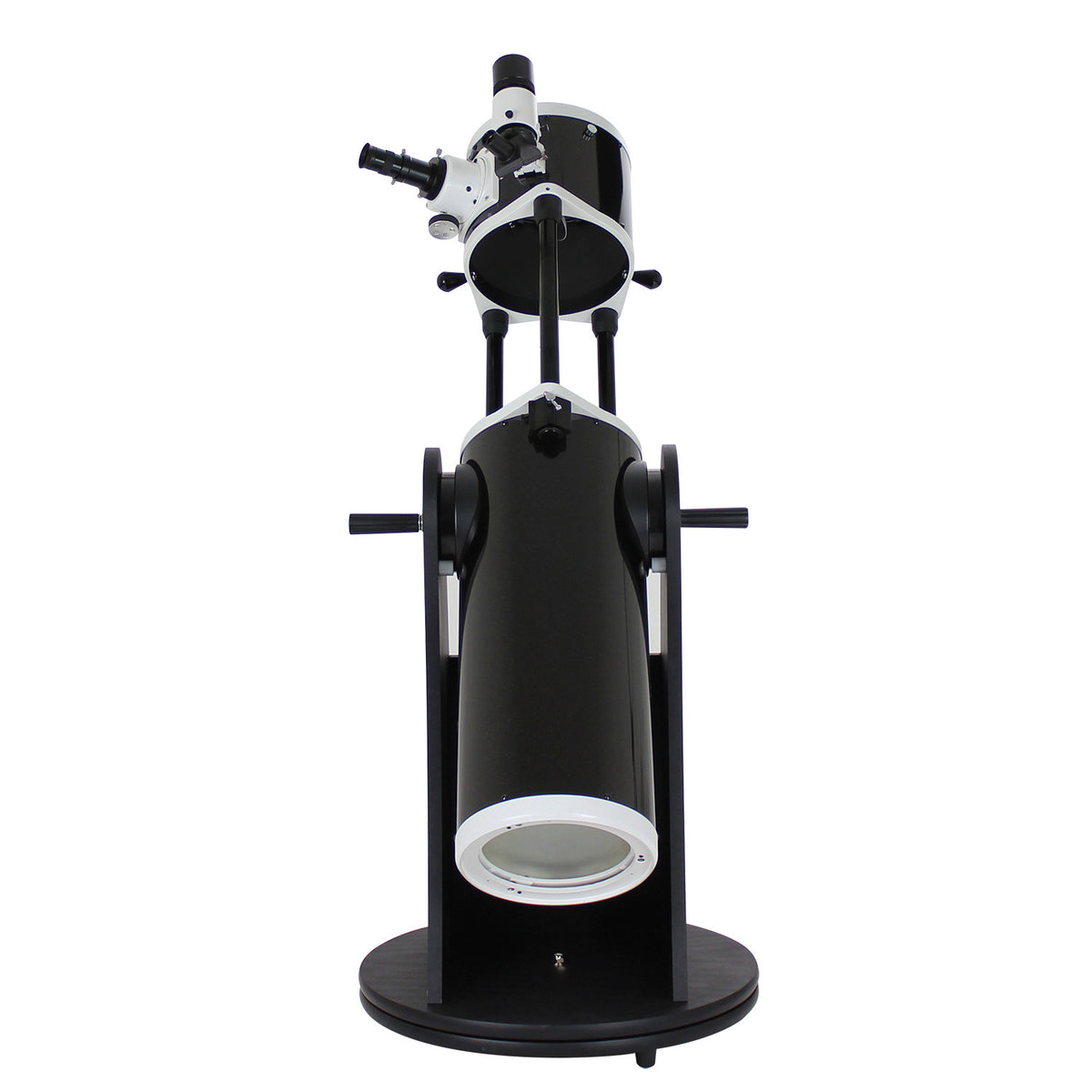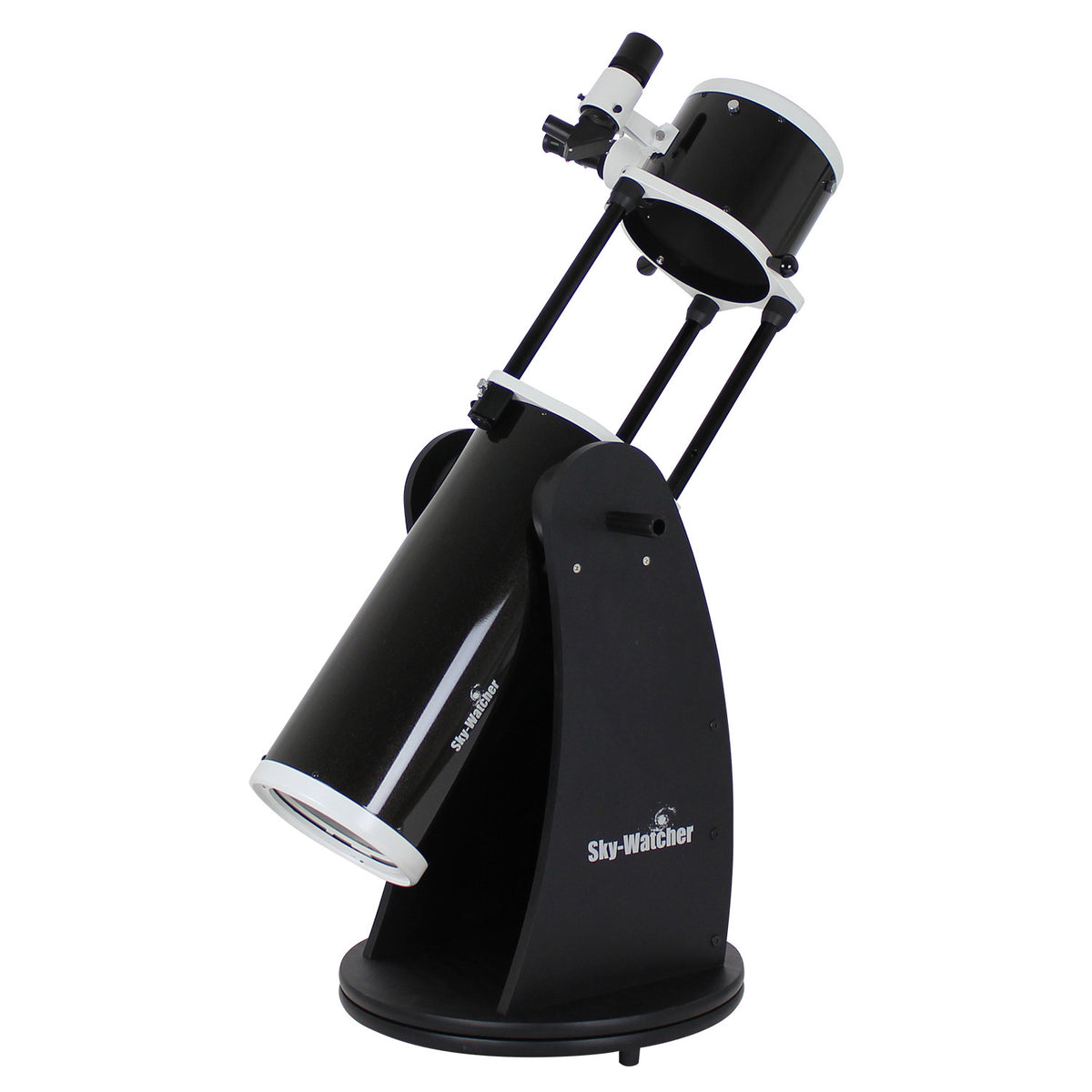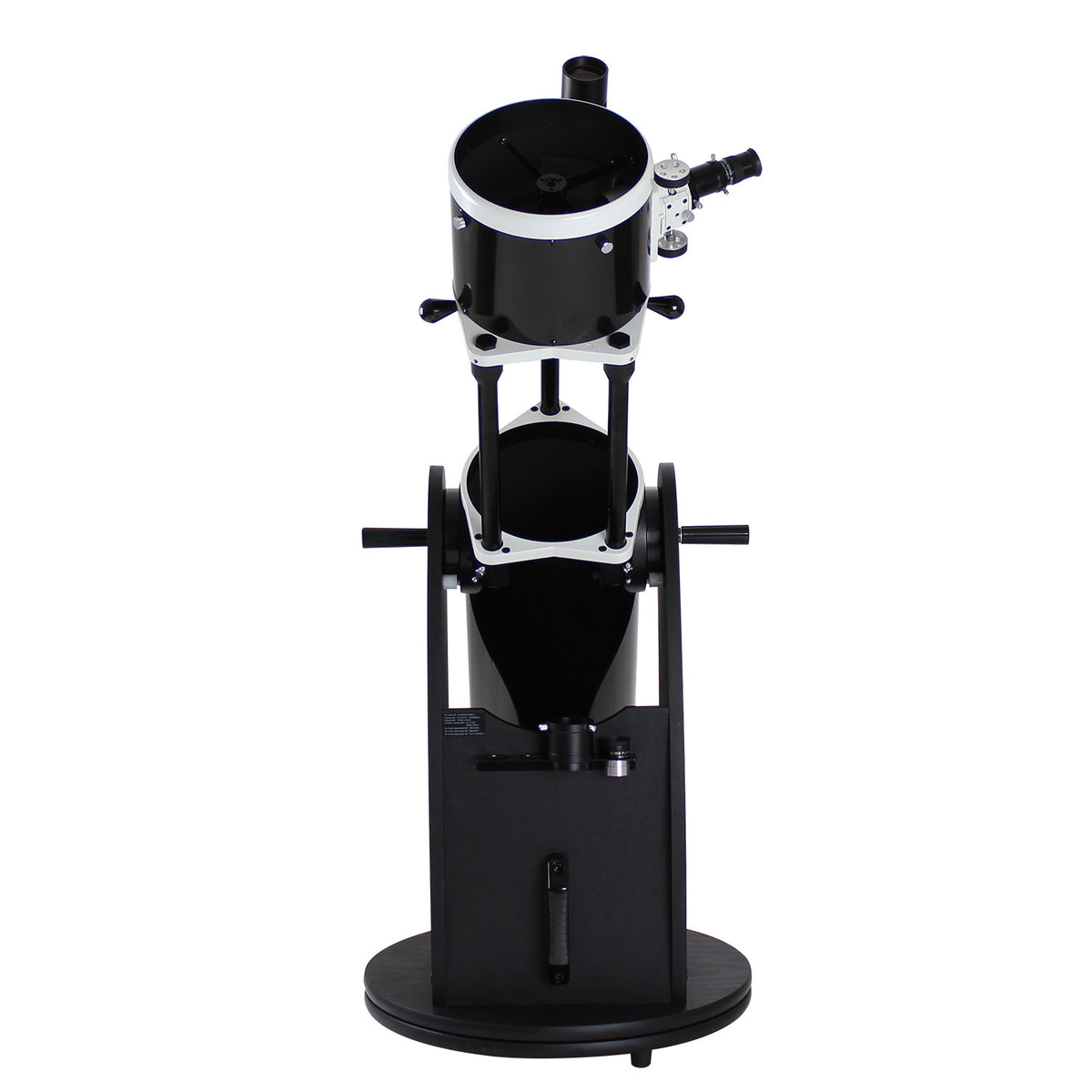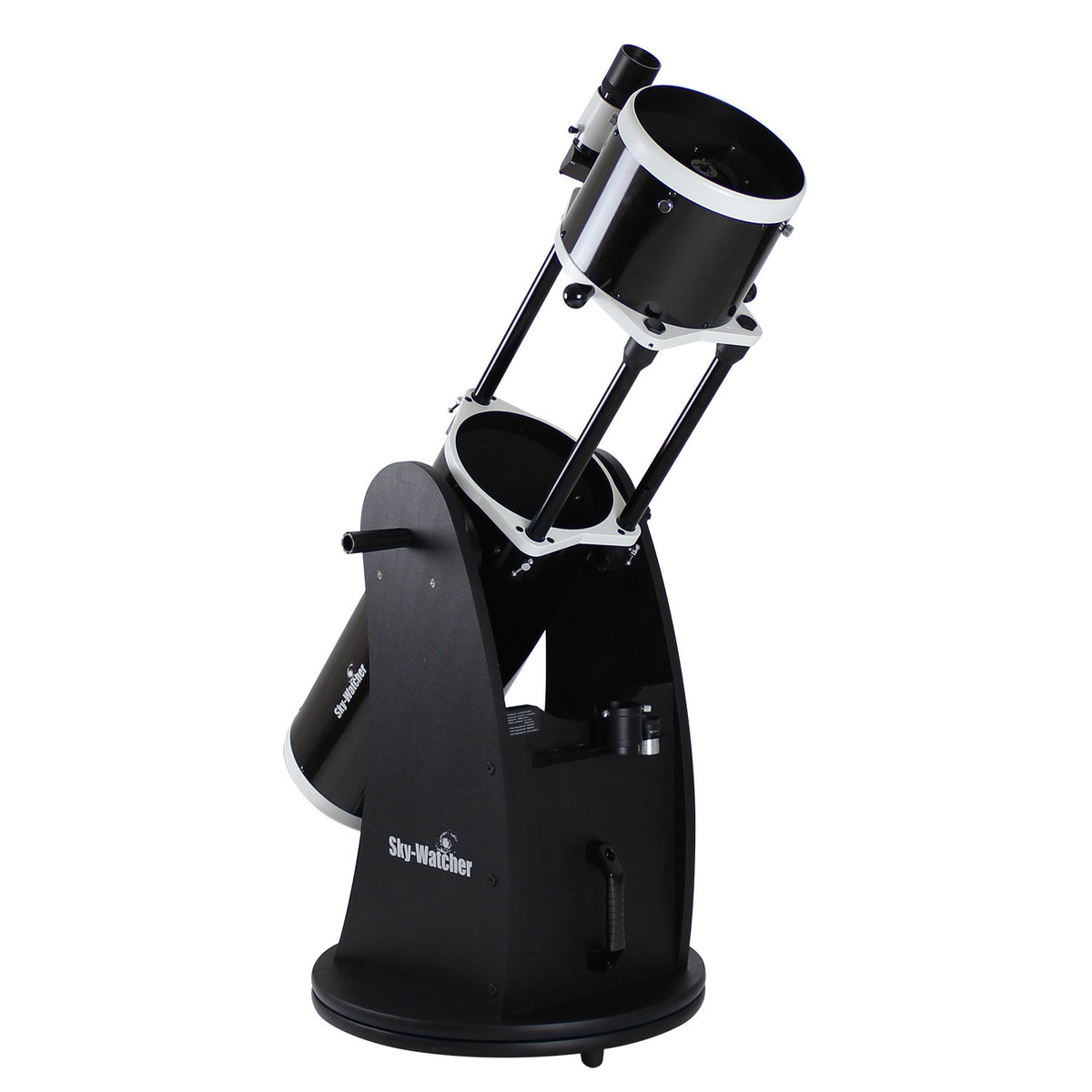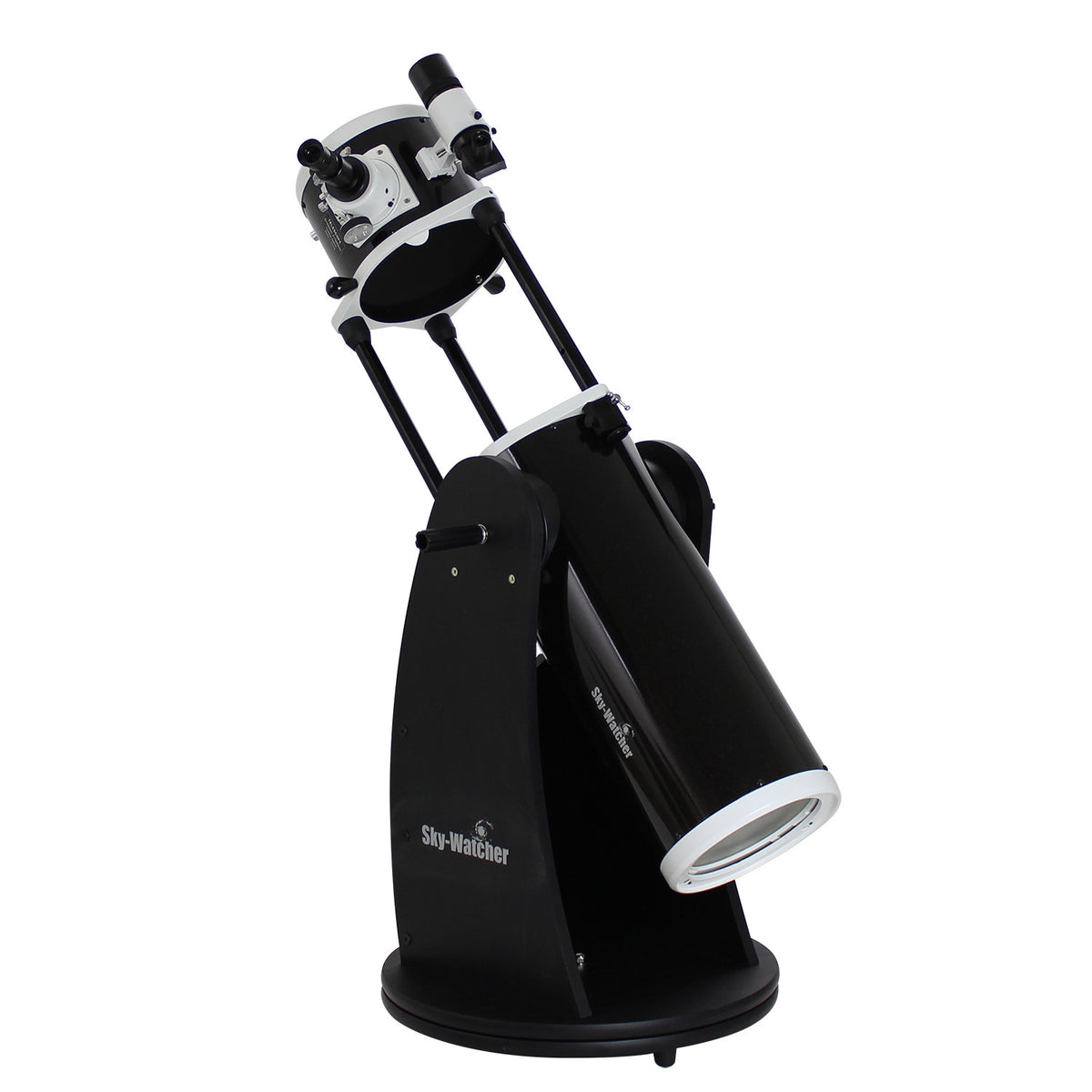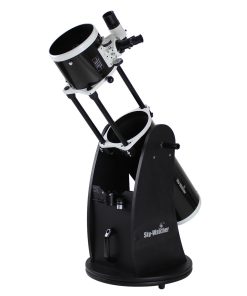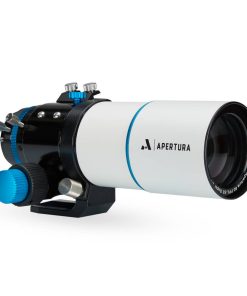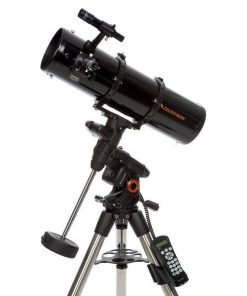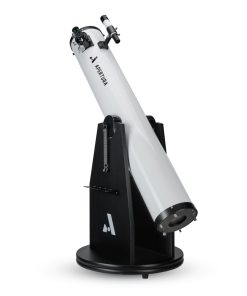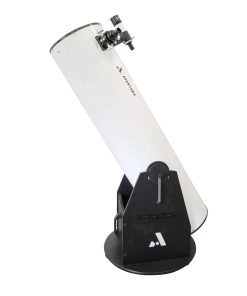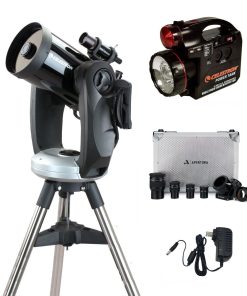Sky-Watcher 8 Inch Flextube Dobsonian Telescope – S11700 Sky-Watcher
$ 755,00 $ 226,50
Sky-Watcher 8″ Flextube Dob – Join the Ranks of Serious Observers
Corresponding to the escalating “aperture fever” that has gripped amateur astronomy for several decades, an 8″ diameter is now generally regarded as the minimum entry-level aperture for serious observing. The low cost, large diameter, and a fast focal ratio of the 8″ Sky-Watcher Dobsonian make it an ideal dedicated telescope for wide-field, deep-space observation of faint galaxies, nebulae, and star clusters. The low-power dramatically captures wide swaths of the sky in a single view. Galaxies and nebula appear to pop out of the heavens as bright, expansive masses of stars, gas, and dust.
Observing with the 8″ Sky-Watcher Flextube Dobsonian
If you have never before observed through a high-quality, wide-field Dobsonian, like the SW 8″ DOB, you are in for one of the sweetest experiences in amateur astronomy. Imagine the exhilaration of opening a clam and discovering a pearl. The sky is full of pearls, astronomical pearls. While they won’t make you rich in the financial sense, for amateur astronomers at least, observing the fabled pearls of deep-space is a rich and even exhilarating pastime. A catharsis for the soul that renders the mundane insignificant, and reconnects us with the inner child who revels in awe and wonderment. A night observing with the SW 8″ Dob can leave you with a lingering sense of contentment long after the evening’s viewing is over. Some of amateur astronomy’s most revered and enthusiastically observed deep-sky objects are now within your reach. This instrumentation provides entry into the brotherhood of serious amateur astronomers—you have arrived!
The summer sky is aglow with astronomical pearls. In the constellation Sagittarius, several of the sky’s most prominent emission nebulae can be seen well in your 8″ SW DOB. The Lagoon Nebula (M8) is a rich aggregation of dust and gasses illuminated by its youthful central stars. This is an area of star formation, the universe giving birth. The Lagoon Nebula appears fiery red in astrophotographs due to the hot hydrogen gas. Located nearby is the smaller, but very beautiful Trifid Nebula (M20). These two nebulae can actually be seen in the same field of view. The magnificent Swan Nebula (M17) is also located in Sagittarius. It is named the Swan for its resemblance to the stately bird. The sky’s most awesome globular star cluster, M13, is located in the constellation Hercules, a bee-hive of thousands of stars swarming about a central core. Globular clusters are no longer being formed in the universe, so you are observing fossil light, a glimpse back in time. This is the brightest object of its kind and always a treat to view. The globular cluster M92 is likewise very interesting and can also be found in Hercules.
The winter sky holds several stunning pearls oft referred to in popular culture, not just astronomy. Our closest external galaxy, the beautiful Andromeda, perhaps the defining galaxy of the classic spiral form can essentially be seen almost in its entirety within one eyepiece field. Winter’s diffuse Great Orion Nebula (M42) is the brightest emission nebula in the heavens. While it can be seen with the naked eye from a dark location, it is nothing less than spectacular in an 8″ SW DOB. A billowing cloudlike cauldron of dust and gasses illuminated by large, intensely glowing youthful stars, this object is perhaps the mother of all pearls. The preceding is just a short sampling of objects that can be seen. Many more pearls of the night sky await you.
Sky-Watcher Dobsonians Epitomize Ease-of-Use
Observing with a Dobsonian has been described akin to shooting ducks in a gallery because it is so easy to find your target. Just swing your SW DOB to the quadrant of the sky to be searched, and scan the vicinity. An 8x50mm Right-Angle optical viewfinder provides both magnification and light-gathering to help narrow your search for those elusive fuzzies when star-hopping. The standard-equipment backlash-free 2″ Crayford Focuser ensures ultra smooth focusing adjustments. Multi-coated, 4-element Plossl eyepieces (25mm and 10mm) provide a spacious 52? Apparent Field of View.
To ensure mechanical ease-of-use, SW uses a high-performance Teflon bearing system in both axes combined with tension adjustment in altitude to facilitate setting the appropriate amount of friction, assuring smooth vertical and horizontal manual movement without free-play from small bumps or gusts of wind. This also eliminates the need to have a balanced optical tube as in an equatorial mount. Sky-Watcher’s Teflon bearing system is preferable to the use of ball-bearings. Ball-bearings make unintended movement of the optical tube more difficult to control. Fortunately, at low power, deep-space objects leisurely drift through the field of the SW 8″ DOB, so constant mechanical adjustment of the telescope’s orientation isn’t needed to keep objects in the field of view.
Sky-Watcher’s revolutionary truss-support concept allows the optical tube’s front and back cells to collapse together, aligning on the truss support rods which can then be locked down for easy and secure telescope transport. This one piece, low-hassle OTA design is mechanically simple and results in large aperture telescopes that can be reasonably handled and transported by one individual. This innovation gives Sky-Watcher users tremendous functional ease-of-transportability.
Sky-Watcher Uses Quality Components Throughout
The Sky-Watcher 8″ DOB utilizes quality components throughout. Pride of workmanship manifests itself in high quality standards of optical and mechanical fabrication. The polishing process for primary and diagonal mirror yields smooth mirror surfaces ensuring good contrast, and properly corrected optics show minimum alterations to the optical wave-front.
On each primary mirror, and elliptical diagonal mirror aluminum is vacuum deposited to the front glass surface and then over coated with hard quartz (SiO4). Additional layers of Titanium Dioxide (TiO2) and (SiO4) are then applied. Dust covers help keep your DOB clean when not in use.
The mechanical and structural components of the OTA exhibit rigid construction and outstanding stability. The mount construction is sturdy and rigid. Mount design, while simple, facilitates smooth motions about both axes. Quality accessories enhance the observer’s viewing experience.
Collapsible Truss-Tube Dobsonians from Sky-Watcher now feature two sets of holes – one for standard viewing, and one shorter set for use with a binoviewer or even with a camera.
- 8″ (200 mm) Dobsonian-style Newtonian
- 1200 mm focal length (f/6)
- 2″ Crayford-style focuser with 1.25″ adaptor
- 4-element Plossl 25 mm and 10 mm 1.25″ eyepieces
- 8×50 RA viewfinder
- Solid rocker-mount with Teflon bearings and tension clutch
- Collapsible Tube Design For Easy Storage and Transportation
Quick Shipping and Professional Packaging
Due to our longstanding partnership with UPS FedEx DHL as well as other major international carriers, we are able to provide various shipping options. Our warehouse personnel are well trained and will be able to pack your goods in accordance with the exact and precise specifications. Your goods are thoroughly checked and securely secured prior to shipment. Everyday we deliver hundreds of packages to our customers from all over the world. Our determination to be the biggest online retailer in the world is shown by this. The warehouses are located situated in Europe in the same way as they are in the USA.
Note: Orders containing multiple items will have a separate processing period for each item.
We will carefully examine all products before they are shipped. Today, the majority of orders will be delivered within 48 hours. The delivery time will be between 3-7 working days.
Returns
We don't manage the stock at our warehouse and factory. The actual inventory may fluctuate at any time. It's possible that you may not receive your order once it's been placed.
Our policy is for 30 days. We are unable to return or exchange your purchase after 30 days since the purchase.
In order for your item to be eligible for return the item must not be opened and in the condition you received it. It must also remain in the original packaging.
Related products
Telescopes
Apertura 60 mm f/6 FPL-53 Doublet Refractor with Field Flattener Kit – 60EDR-KIT Apertura


